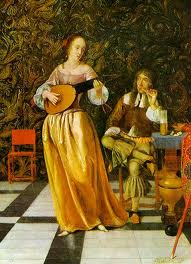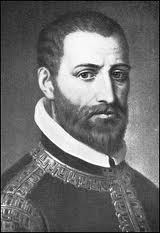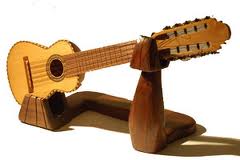Spanish Music of the Renaissance

The XVI century saw the advent of the Spanish Empire and the beginning of the Spanish Golden Century, which would last well over 100 years. With the accession of Charles I to the Spanish throne, and the further unification of the Habsburg territory under one Emperor, Charles, now V of Austria, rather than I of Spain, a strong nordic influence was felt in the country's Renaissance music, as artists travelled from Flanders and Germany to Spain and vice versa.
Consequently, the characteristic polyphony found in Spain during the XV century, propelled primarily by the Castilian school, but also by the choir of the Cathedrals of Seville and Leon, gave way to the harsher sounds of the Flemish school. Within this environment, Mateo Flecha becomes the first distinctive composer of the first quarter of the XVI century.
Working in the Cathedral of Lleida, the Catalan Flecha gained notoriety for his ability to create ensaladas, quite literally a musical 'salad' or pastiche, intended to deliver refined entertainment to the aristocracy of the time. He was also an accomplished writer of villancicos and there are records of him writing at least two sacral composition in Latin, both of them now lost.

Flecha, however, was the rare exception in that he favoured the style developed during the final portion of the previous century over the new tendencies, made popular among others by Cristobal Morales. Morales lived and worked in Italy for close to 20 years. He composed exclusively sacral music, at a staggering pace, completing over 20 masses, 80 motets, 18 magnificats and 11 hymns and he became a great influence on posterior composers, such as Francisco Guerrero or Tomás Luis de Victoria.
Known as the 'Spanish Palestrina', Tomás Luis de Victoria is one of the main exponents of Counter-Reformation late Renaissance music. Consequently, his repertoire includes only sacral pieces, among them 20 masses, 44 motets, two passions, an Office of the Dead and an Easter Office. Deeply emotional, Victoria's music is said to evoke the melody of Mysticism by entwining various voices in the choir and giving the organ a predominant role in his compositions.
While Morales and Victoria only wrote sacral pieces, Francisco Guerrero was prolific in liturgical music (he wrote 18 masses and over 100 other sacral compositions) as well as in the popular songs of secular Renaissance music. He lived large portions of his life in Italy and Portugal, although he also spent several decades in Spain, becoming one of the most respected composers of his time.
Vihuela

Among Guerrero's secular compositions count a number of pieces for the vihuela. Which fits nicely to link the sacral tradition of the Christian kingdoms with the Andalusian music of the southern portion of the region, where the oud was one of the dominating instruments. Similar to the lute used in the rest of Europe, the vihuela was a string instrument with 12 paired strings which, most likely, led to the development, years later, of the Spanish guitar.
The vihuela was immensely popular in secular Renaissance music in Spain, and as early as 1536 Luis Millán already had written the first treatise on its use. Born in Valencia Millán used the instrument primarily for his fantasies, but also for other forms of secular entertainment, such as villancicos and pavans.
Other major representatives of the early development of the vihuela as a musical instrument in Spain include Luis de Narváez and Vicente Espinel. Narváez stands out as the first developer of polyphonic songs for the vihuela, becoming the first composer to examine the technique of variations. He has claimed his place in the history of Spanish Renaissance music through Los seys libros del Delphin de música de cifra para tañer vihuela, published in Valladolid in 1538.
While Narváez and Millán were instrumental in the early development of the vihuela, Vicente Espinel would take the next step and open the field for the appearance of new tendencies. Thus, he is said to have turned the guitar into a five-string instrument (previously it had only four) and to have invented a new verse, the decima.
